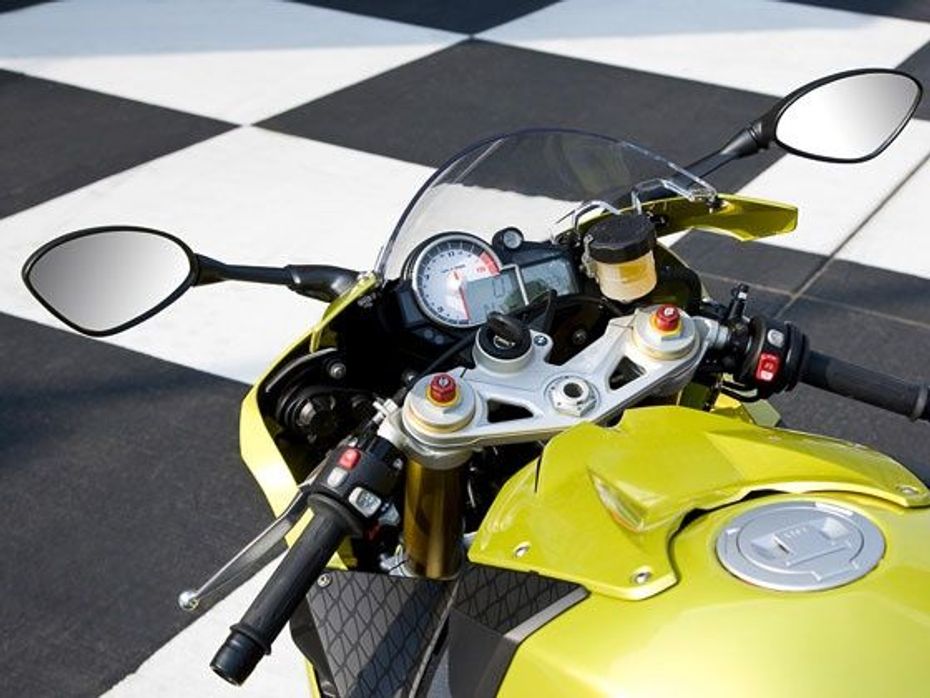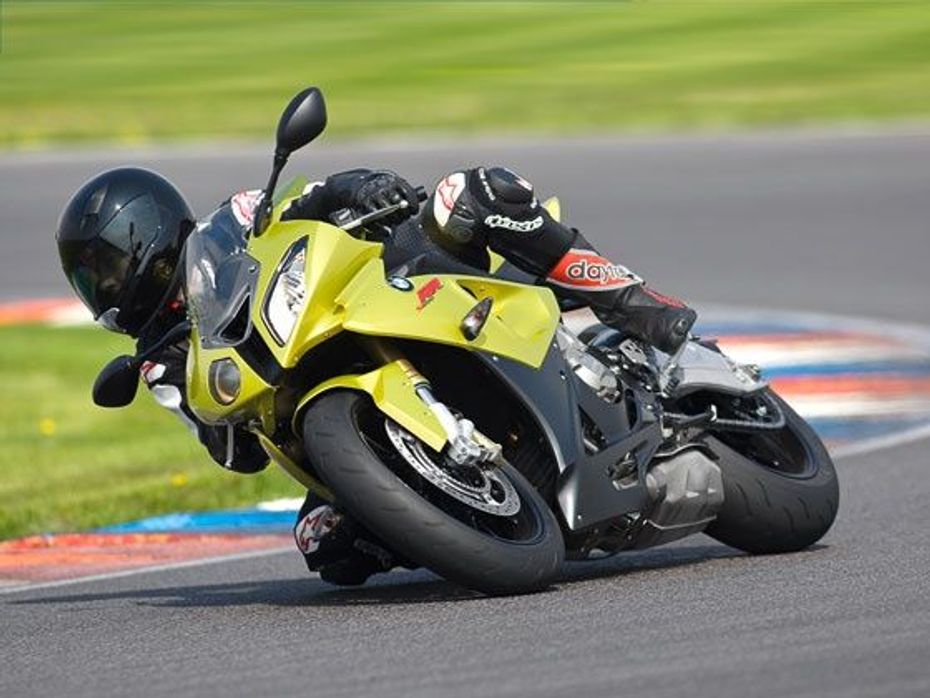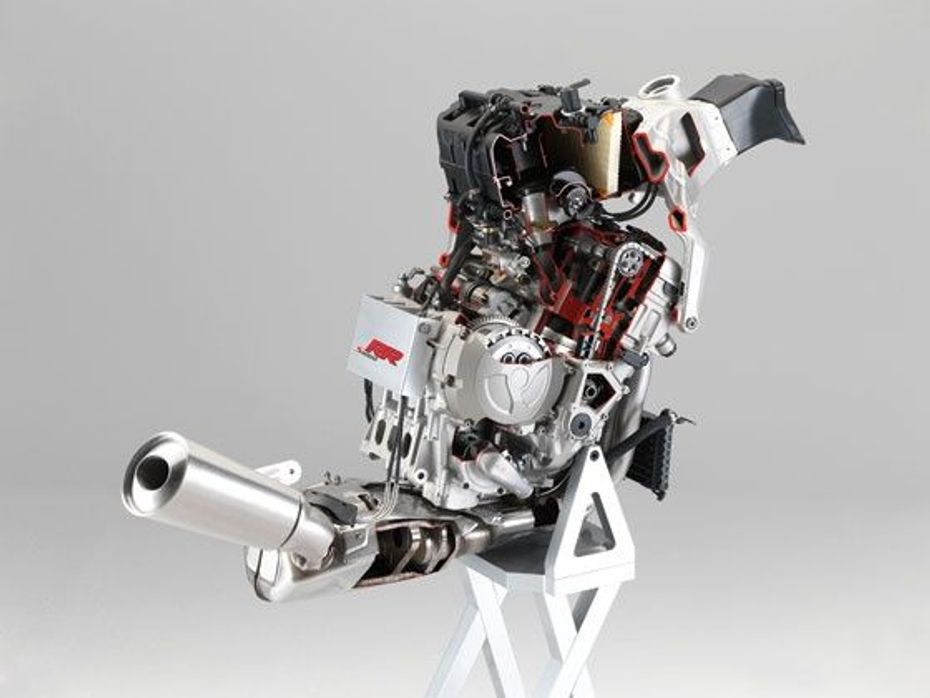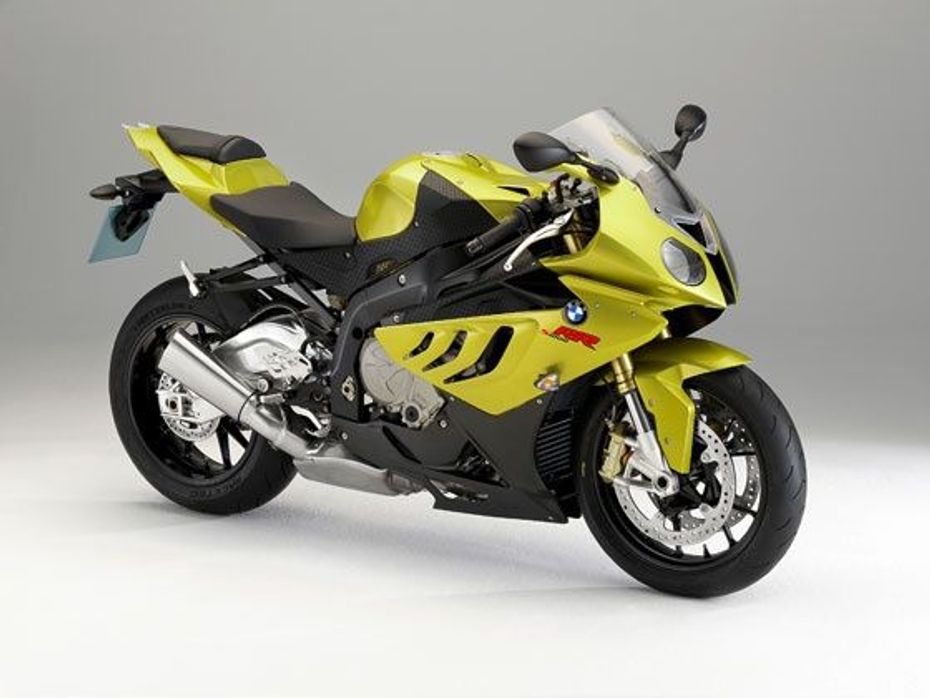 Classic And Vintage Car Lovers, Rejoice! Import Policy Now Relaxed
Classic And Vintage Car Lovers, Rejoice! Import Policy Now Relaxed
 Royal Enfield Shotgun 650 Limited Edition Launched
Royal Enfield Shotgun 650 Limited Edition Launched


Mention the name 'BMW' to any lay person, and they will immediately conjure up images of super luxurious and super fast cars, with nary a thought about anything on two wheels. But motorcycle enthusiasts are well aware that BMW makes some of the best, albeit some of the most quirky bikes on the planet, regularly featuring unconventional touches like boxer-twin engines, shaft drive and telelever front suspension amongst others.
So going by this whole unconventional bike building philosophy, one would think that when BMW was making a bike to race in the World Superbike Championship, it would probably come with a jet engine strapped on. But one look at BMW's new superbike, the S 1000 RR, will reveal that apart from a few aesthetical choices, there is nothing really unconventional about it - a 999cc inline-4 engine, standard upside-down forks at the front and a fairly regular chassis design. In a sense, the boffins at BMW went ahead and built themselves a Japanese superbike.

But start looking past all these similarities and dwell a bit into the history of the Japanese and German litre-class bikes, and the difference in the approach becomes clear. While the Jap machines started life on the street, eventually making their way onto the track and blurring the lines between a road and a race bike, BMW's philosophy has been to make a race-winning bike from the start and will only be producing 1000 units this year necessary for homologation. But this means that the street version of the bike comes with all the goodies from the actual race version - namely a very high power-to-weight ratio, Race ABS (Anti-lock Braking System), Dynamic Traction Control and even an optional Gearshift Assistant that allows lightning-fast gearshifts.
The secret behind the S 1000 RR's astronomical performance is the extremely compact and light 999cc four-pot engine which produces a heady 193 PS of power backed up with 112 Nm of torque, made possible with technologies such as fully sequential fuel injection, variable-length intake manifolds and a drive-by-wire throttle system. Another contributing factor to the bike's stratospheric amounts of power is the design of the cylinder head cam follower valve drive based on BMW's Formula 1 technology. The narrow valve angles help to provide ideal intake ducts as well as a compact combustion chamber for high compression and optimum all-round efficiency. The S 1000 RR also comes fitted with an anti-hopping wet clutch which basically limits the amount of torque that is transmitted to the rear wheel under hard braking and downshifting, severely restricting the rear from sliding.
But these days, outright horsepower figures are just one part of the equation. To balance out this equation, BMW engineers have gone all out in making the S 1000 RR as light as possible. With a full tank of petrol and all other fluids in place, the bike weighs in at just about 204 kg, giving the S 1000 RR one of the highest power-to-weight ratios amongst all production bikes in the world. Just to put it into perspective, the 2009 Honda CBR1000RR Fireblade, pretty much the daddy amongst the litre-class superbikes, has a power-to-weight ratio of 848 PS/tonne while the S 1000 RR eclipses this figure by a class leading 934 PS/tonne!

For a super-sports machine though, just power isn't everything. If a superbike has to work perfectly on the track as well as the street, it should have the handling abilities to match its power delivery and the key to good handling, apart from a good chassis design, is the weight distribution. However, the Achilles Heel of any bike, when it comes weight distribution, is its engine. BMW dug deep into its Formula 1 experience to make the powerplant as light and as compact as possible. Every little doohickey in the engine has been designed in a manner to shave off those precious few grammes. Miniscule weight savings with the aid of extra light titanium valves, equally light single cam followers and ultra-light heat treated con-rods make the four-cylinder mill weigh in a tad below 60kg. The narrow engine nestled within the narrow aluminium bridge frame also allows the tank to be as slender as on a 600cc machine, giving the rider excellent control and handling at all times.
The S 1000 RR even has a short muffler mounted as close to the centre of the bike as possible to keep all the bike's mass centralized - a common trend it seems to borrow from its competition from the Honda stables. But the muffler's design isn't just about smart weight distribution. The exhaust system consists of the short muffler, a pre-silencer and electronically interference flaps as well as a fully controlled exhaust gas manifold and two three-way catalytic converters. Weighing a mere 10.7kg, the stainless steel exhaust system is the most compact exhaust system with fully controlled emission management in its class.

While most of the technology on the S 1000 RR may be more competent than that on its competition, it isn't really groundbreaking, until we come to the bike's two main party pieces that is. The S 1000 RR is the only supersports bike in the world that offers a Race ABS and DTC Dynamic Traction Control in combination, all of which can be easily controlled by the rider by putting the bike into any one of four riding modes at a touch of a button on the handlebars. The "Rain" mode is specifically designed for riding on a wet surface where there is reduced grip and automatically limits the engines maximum output to 150 PS, while making the power delivery extra smooth and soft. The DTC system also cuts in very early in this mode to ensure maximum traction over the slippery surface. Switch the bike to "Sport" mode and the S 1000 RR unleashes all 193 of its wild horses and makes throttle response significantly sharper - the standard mode all riders would want to use when sport riding in the twisties in dry conditions. "Race" mode however is specifically designed for racetrack use with street-legal supersport tyres and its here where the mad Beemer starts to show its real racing pedigree with an even sharper throttle response and the DTC dialed down appreciably.
However, when you decide that you want stop messing about and want to get into the shoes (or racing boots) of someone like Troy Corser, the S 1000 RR has a special "Slick" mode that can be activated by a code plug under the riders seat. For use with slick tyres on race tracks, this mode puts the bike in all-out track performance mode, where it stops behaving like a road bike and becomes your very own WSB race bike. The "Slick" mode also sets up the DTC to allow the bike to wheelie for up to five seconds when leaning over to an angle of less than 20-degrees, ensuring maximum acceleration out of a corner. The DTC and the Race ABS work in harmony with the various ride modes ensuring the perfect amount of bike control in any given condition.

The BMW S 1000 RR is an extremely potent supersport machine which has started its racing career this year in the World Superbike Championship. With the launch of the road-going version this S 1000 RR, BMW has set the benchmark in the litre-class supersports segment with a bike that is the lightest and one of the most powerful in its class. As a street legal bike, all of BMW's technology and engineering efforts should make it an extremely approachable and a safe bike to ride. Aesthetically however, with its asymmetrical headlights, panels and quirky bits, it may not be for everyone. The S 1000 RR is set for its official launch at the end of this month and will be available at BMW dealers by December 2009. Now, following in the footsteps of all the other big bike makers, there is a good chance that BMW might bring this mean machine to India in the near future.
India's largest automotive community
 MG Astor First Drive Review: Standing Out In Style
MG Astor First Drive Review: Standing Out In Style
 2021 Mahindra XUV700: First Drive Review
2021 Mahindra XUV700: First Drive Review
 Kia Sonet Driven: More Than Just A Great Brochure?
Kia Sonet Driven: More Than Just A Great Brochure?
 Rolls-Royce Ghost Series II
Rs. 8.95 Crore
Rolls-Royce Ghost Series II
Rs. 8.95 Crore
 Kia Syros
Rs. 8.99 Lakh
Kia Syros
Rs. 8.99 Lakh
 Vayve Mobility Eva
Rs. 3.25 Lakh
Vayve Mobility Eva
Rs. 3.25 Lakh
 BMW X3
Rs. 75.80 Lakh
BMW X3
Rs. 75.80 Lakh
 Hyundai Creta Electric
Rs. 17.99 Lakh
Hyundai Creta Electric
Rs. 17.99 Lakh